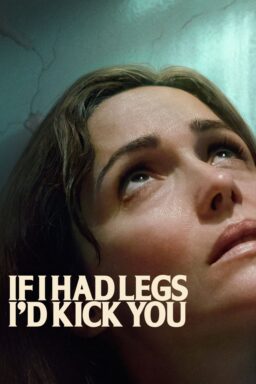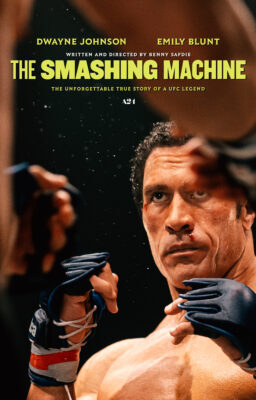In the beginning it didn’t much matter where you made a movie. The motion picture was a gimmick nobody took very seriously, and the vaudeville houses used them to chase out customers between shows. When the customers started to linger, an industry was born.
Many of the first American movies were made in and around New York City, but during the first decade of this century Chicago became just as important as a film center. We were, to begin with, the hub of the nation’s railroads. That led directly to our becoming the mid-American hub of the great vaudeville circuits, and as a show business capital we were naturally interested in this new entertainment invention.
The old Essanay Studios, up on the North Side at 1345 Argyle, were for a decade or so our MGM, Paramount and Warner Bros. Between 1908 and 1917, Bronco Billy Anderson churned out a multitude of short and profitable Westerns. Charlie Chaplin made a lot of his first one-reelers and Gloria Swanson married Wallace Beery on one of its stages.
But then the center of film production shifted to Hollywood, not just because of its sunshine, but
because California was a distant and mysterious place, far away from the patent-holders in the Edison trust who wanted royalties for the use of their equipment. By 1920, Chicago was dormant as a major center of feature films, and dormant it is likely to remain. All the same, Marcello Mastroianni was racing across the Wells Street bridge just the other day, Lauren Hutton was strolling along Grand Av., and in the past several weeks Chicagoans have been able to watch Candice Bergen, Peter Boyle and James Caan acting in scenes at such indisputably Chicago locations as Civic Center Plaza, the First National Bank, O’Hare Airport, Sheridan Road and the Loop at lunch hour.
For the first time in recent memory, two feature films were being shot in Chicago at the same time. “T. R. Baskin” completed its 10-week shooting schedule on April 9, and “Excuse Me, My Name is Rocco Papaleo” will be filming here for the next five weeks. Both film companies have stayed out-of-doors a lot of the time (five weeks, in the case of “T. R. Baskin”) to make use of the city as a location.
During the entire decade of the 1960s, only six feature films were shot in Chicago. Three were
Chicago-inspired (“Goldstein,” “Fearless Frank” and “The Monitors”) and three were major studio
productions (“Mickey One,” “Medium Cool” and “Gaily, Gaily”). All of them had trouble of one sort or
another. Norman Jewison, the director of “Gaily, Gaily,” was finally so discouraged by the lack of
cooperation and the popularity of hand-outs that he moved his production to Milwaukee.
All the city did, officially, was to claim Jewison had been cooperated with whenever possible. But
something must have been happening behind the scenes to remedy Jewison’s complaints and promote Chicago as a plausible location for feature films. After all, during one recent year, 29 features were shot in New York under Mayor Lindsay’s open-door policy, and they brought a lot of jobs and money with them.
The lesson must not have been lost on Mayor Richard J. Daley (although he has never publicly welcomed film crews with the open arms Lindsay spreads so wide). He appointed Jack Bowen, the city’s assistant director of public relations, to act as liaison with filmmakers.
The first to bite was Peter Hyams, a former newscaster on Channel 2 who’d been bounced in a lineup shuffle. Hyams retreated to New York, holed up in a basement and vowed that he would write and produce a movie in Chicago within a year. He made his deadline with a week to spare.
Hyams’ “T. R. Baskin” was filmed in and around Chicago, with the indoor scenes shot at the Wilding Studios (formerly Essanay), On the last day of shooting, Hyams said the city couldn’t have been more cooperative.
“We didn’t have a single problem,” he said. “We were allowed to shoot anywhere we wanted – even in the Loop at lunch hour! – and the police were magnificent at handling crowds.”
“Were there…?” I began.
“Not a dime!” Hyams said. “I’ve been asked that question so often I can spot it coming. Not a single pay-off. Not a sou. I knew coming in here that Norman Jewison had had all sorts of problems. But, I also knew that if I stormed out of Chicago, like Jewison did, Chicago would have to wait a long time before another producer came here.
“I think the city knew that too, and that’s why they appointed Bowen. The city is rational. It wants movies here, and it wants the jobs we bring. We worked out a plan with Bowen where we had an off-duty sergeant and six policemen assigned to the unit, and we paid them their regular salary.
“We actually had less trouble than we would have had in New York. The unions cooperated in every way possible; they want more movie production here, and they aren’t impossible the way the unions on the coasts can sometimes be…”
That experience seems to have been learned the hard way by the Italian makers of “Excuse Me, My Name is Rocco Papaleo,” a movie originally scheduled for New York shooting. It was moved here after labor
difficulties in New York, and now Alexander Normann, the production manager, says he’s happy it worked out that way. “The architecture is more interesting and we’re constantly discovering sensational locations we never even knew existed in Chicago.”
The look of Chicago as a location has hardly been scratched by the movies. Arthur Penn’s “Mickey One” got some interesting angles of Marina City, but for the film’s climactic chase scene Penn constructed a set of night club facades instead of using Rush Street. Jewison’s “Gaily, Gaily” was set in 1910 and included a $1,000,000 set of a street scene under the ‘L’ but not an inch of real ‘L.’ Moviegoers who instantly recognize Fifth Avenue, Piccadilly, Venetian gondolas and all that are lost, I imagine, when asked to identify the Wrigley Building.
All the same, Chicago has a bad reputation for looks. Despite the fact that we’re the most distinguished major city of the 20th Century (in architecture, that is), people think we’re grim and gray and huddled around the stock yards. A Hollywood producer actually described Chicago to me last week as “sort of a dirty New York,” when filth, in fact, is another of the many areas where New York leads us.
“When we hired Herbert Ross to direct ‘T. R. Baskin,’ he didn’t want to come to Chicago,” Hyams recalls. “He wanted New York or Detroit…anything. I brought him here for the first time, and he was astonished. He says Chicago has a special look unlike any other city. Not better or worse, but indigenous. He says there’s a strange scale of color here, something about what the people wear. I’ve personally always been fascinated by the mixture of architectural styles. You’ll have a skyscraper than ends in a church steeple, next to an office building that looks like a faded hooker. Herb fell in love with the alleys.”
The new boomlet of interest in Chicago as a movie location comes at a time when Hollywood, ironically, is no longer an ideal place to make a feature. The unions have brought virtual paralysis to certain kinds of productions, the studios offer more in the way of overhead charges than in services, and movie audiences like the feel of an authentic location.
At the same time, advances in movie technology have brought lights, cameras and films that travel easier and adapt to the conditions of real locations. The more inventive producers are shying clear of Hollywood and its hassles and choosing locations where their work is made easier. And as a location, Chicago is virgin territory.
“The people filming here are finding a lot of exciting settings in Chicago,” David Stahl, the deputy mayor, was saying the other day. “Chicago is a very attractive city, physically, and that’s something a lot of people don’t seem to know. We’re trying to encourage filming here because it’s good for the employment of Chicago talent and it brings in money. But we also think the movies can help our…I hate to use the old word ‘image,’ but I guess that’s what I mean.”











